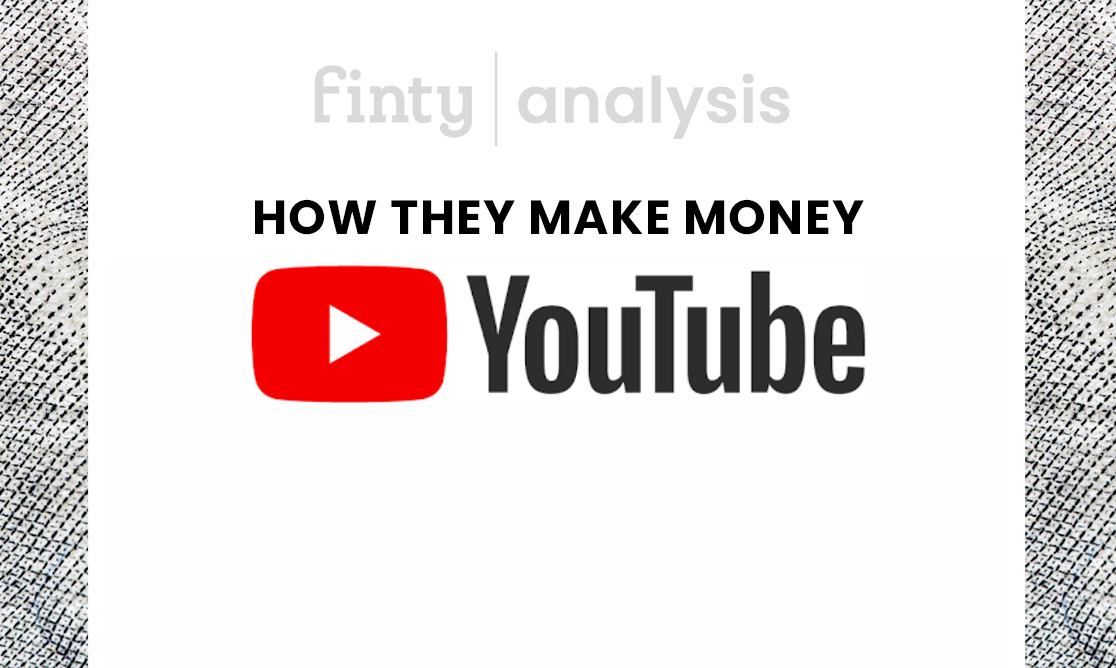- YouTube follows its parent company, Alphabet Inc.'s revenue model of charging for advertising on its platform.
- The company has a diverse business model, earning through several divisions.
- Users upload more than 720,000 hours of content to the platform every day.
Steve Chen, Chad Hurley, and Jawed Karim founded YouTube in 2005. The platform started as a dating website before pivoting to its current video hosting model. YouTube is the second most-visited search engine online, after Google.
Google purchased YouTube after seeing its search traffic for its online video streaming platform declining while YouTube user growth was climbing through the roof.

Coming up next
What does YouTube do?
YouTube is a free online video streaming platform. The bulk of the content available through its service is free, but it also has a premium offering for paying subscribers. The platform provides billions of hours of free content, and it grows its income by building its user base.
The company attracts 1.8 billion unique users each month, offering advertisers a chance to reach their key demographic and buyer persona through its advertising module. YouTube also hosts a Premium offering for paying subscribers, giving them access to a huge catalog of original TV shows and movies.
How does YouTube work?
YouTube allows registered users to upload content to their channel on the site. Viewers can show their approval for creator content by subscribers to the creator's channel and liking and commenting on videos.
Creators have the option of monetizing their content by placing ads in their videos. YouTube shares its advertiser revenue with creators.
The main YouTube platform doesn't charge users for viewing content. However, creators have the option of implementing tools, such as the "Join" button to offer their subscribers exclusive content and rewards.
How YouTube makes money
YouTube makes money by implementing an ad revenue model similar to Google. YouTube earnings pale in comparison to the income generated by AdWords and AdSense. YouTube ad revenue accounts for around 11% of Google's annual advertising revenues. The company also operates a diverse business model, earning income through several streams.
Sponsored Videos
Sponsored videos appear in the upper left corner of the user's recommendations when they log into their account. These SERP advertisements pay YouTube a fee based on clicks received on the video.
Embedded Advertisements
Creators that monetize their videos allow YouTube to insert embedded videos into their content. Creators can choose how many ads they want in their videos and share a portion of the ad revenue.
These ads appear as video ads and popups during the viewing experience. These ads will play before the video starts and during the video playback.
Landing Page Advertisements
If you open YouTube without logging in, you end up on the website's home page. YouTube sells banner ads on this page to advertisers.
YouTube Premium
YouTube Premium offers access to premium content like TV shows and movies for an additional subscription fee. Like Netflix, YouTube provides an uninterrupted experience across all YouTube platforms, including YouTube, YouTube Gaming, and YouTube Music.
Join buttons
Creators can place a "Join" button next to the subscribe button on the video footer. Users pay a monthly subscription fee for exclusive content by clicking this button. It's similar to Patreon, allowing creators to earn additional fees through a subscription model. YouTube charges the creator a 30% commission on subscriptions.
YouTube TV
This US-exclusive service offers live TV streaming services where subscribers can watch cable TV channels like ABC, FOX, FOX, ESPN, Disney, and many others, directly through their YouTube account.
Affiliate Earning
Companies advertise on YouTube, giving YouTube a commission when users click links to purchase products through its site.
Future growth engine
YouTube faces a huge problem in the face of declining ad revenue for creators. The 2016 "Adpocalypse" event saw advertisers briefly pull budgets from the platform.
Partners discovered their ads were appearing on extremist content inadvertently hosted by YouTube.
As a result, YouTube went on a censorship rampage, demonetizing content it finds controversial. Many creators saw their livelihoods dry up almost overnight.
Into the future YouTube plans to continue growth by giving creators the tools they need to stay on the platform creating short TikTok-like clips, long videos, live streaming and movies.
Competitors
YouTube competes with other online streaming services by offering free content to its users. Some of its top competitors include the following companies:
- TikTok
- Vimeo
- Twitch

